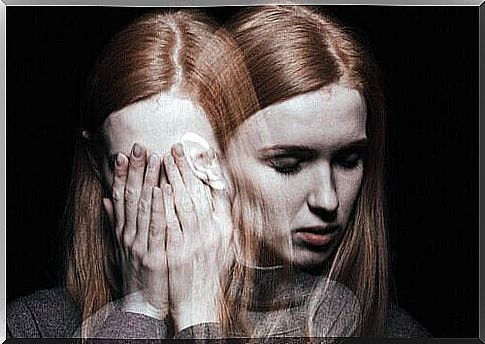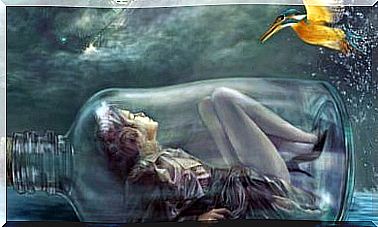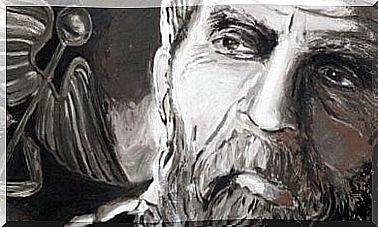Delusional Disorder: Symptoms And Treatment

The essential characteristic of delusional disorder is the presence of one or more delusions that persist for at least a month. During the 17th century, the concept of madness mainly referred to delirium. So much so that the fact of “being mad” came back to that of “having delusions” and vice versa. But, what is delirium?
The best known and most frequently cited definition is that offered by Jaspers in his General Psychopathology (1975). For Jaspers, delusions are false judgments maintained with great conviction. They cannot be influenced, either by experience or by irrefutable conclusions.
To identify a delirium as such, one must take into account the degree to which the experience adjusts to the following points:
- The delirium is maintained with absolute conviction
- It experiences itself as a self-evident truth, with great personal transcendence
- Neither reason nor by experience can alter it
- Its content is often fantastic or inherently improbable
- Other members of the social or cultural group do not share it
- The person is worried because of this belief. And it’s hard for her to avoid thinking or talking about it
- Belief is a source of subjective discomfort that interferes in the social functioning of the person on a daily basis
Delusions are therefore characterized by being fundamentally very complex, and perhaps for this reason it is so difficult to “lock” them into a definition. Today, if we asked someone to describe what he thinks is the stereotypical image of a “madman”, most likely he would tell us that a madman is a person who thinks he is Napoleon or who says the Martians are chasing her.

As we said earlier, the basic characteristic of delusional disorder is the presence of one or more delusions that persist for at least a month. The presence of delusions should not be confused with the diagnosis of schizophrenia. Delusional disorder is one thing, and schizophrenia is another.
The diagnosis of delusional disorder is not made if the person has already had Criterion A for schizophrenia (according to DSM-5). Apart from the direct impact produced by delusions, the deterioration of psychosocial functioning may be more circumscribed than the setting of other psychotic disorders.
In addition, the person with a delusional disorder does not behave in extravagant or strange ways, as might happen with other psychotic disorders. The DSM-5 also reflects that, in the context of delusional disorder, the delusions cannot be attributed to the effects of a substance (eg cocaine) or another medical condition (eg Alzheimer’s disease. ). They also cannot be better explained by other mental disorders, such as Body Dysmorphic Disorder or Obsessive Compulsive Disorder.
The Diagnostic and Statistical Manual of Mental Disorders (DSM-5) cites the following diagnostic criteria for delusional disorder :
A. Presence of one or more delusions for a month or more
B. Criterion A for schizophrenia has never been met. Hallucinations, if they exist, are not significant and relate to the delusional subject (for example, the sensation of being infested by insects associated with delusions of infestation)
C. Apart from the impact of delirium or its ramifications, functioning remains normal and the behavior is not overtly extravagant or strange
D. If major manic or depressive episodes occurred, they were brief compared to the duration of the delusional periods
E. The disorder cannot be attributed to the physiological effects of a substance or to another medical condition. It is not better explained by mental disorders, such as body dysmorphic disorder or obsessive-compulsive disorder.

Recently, the DSM-5 lists the types of delusions that exist. The following types of delusions can occur in a delusional disorder:
- Erotomaniac: the central subject of the delirium consists of the fact that another person is in love with the individual who suffers from this disorder
- Of greatness: the central subject of delirium is the conviction of having a certain talent or knowledge (not recognized). Or to have made an important discovery
- Cello-typical: this subtype applies when the central subject of the delirium is that the spouse or lover is unfaithful
- Persecuting: The central topic of delirium involves the belief that others are conspiring against us. Or that they are deceiving us. Spy on us. Or even follow us. Poison us or drug us. Defame us. Or they harass us. Or prevent us from achieving our long-term goals
- Somatic: it applies when the central subject of the delirium involves bodily functions or sensations
In addition to these different types, there is also the mixed type (it is considered when no type of delirium predominates). Or the case where the type is not specified. The latter applies when the dominant delirium cannot clearly be determined or is not described in the specific types (eg, referential delusions without a significant persecuting or magnitude component).
Delusional disorder is considered difficult to treat. Doctors frequently prescribe anti-psychotic drugs, anti-depressants, and medications that stabilize mood to treat psychotic disorders. Thus, there is a growing interest in psychological therapies as a mode of treatment. On the other hand, we can say that today there is not much room for improvement in delusional disorder interventions.
These days, there is not one form of intervention that is imposed on others for the results it achieves. Until a specific intervention emerges that improves GP outcomes, the treatment of delusional disorders is likely to be based on the modes of intervention that are considered effective for treating other psychotic disorders as well as others. mental health problems.










